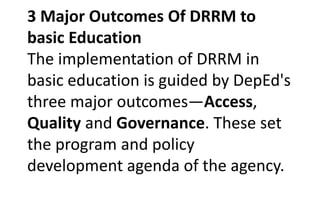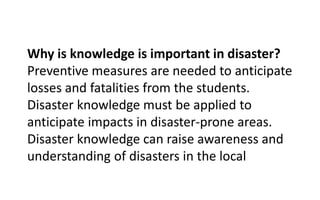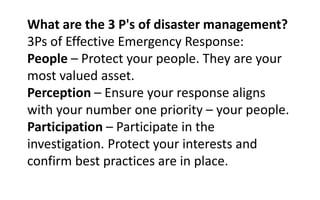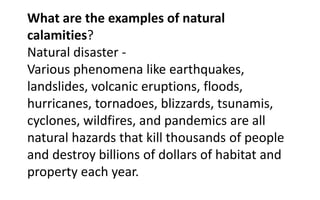The document discusses how disasters have devastating consequences, especially for poor people in developing countries. While hazards cannot be prevented, disaster risk reduction and management can help understand risks and vulnerabilities, prevent hazards from becoming disasters, and mitigate impacts by increasing resilience. This involves activities like prevention, mitigation, transfer, and preparedness to reduce existing and new disaster risks.


















